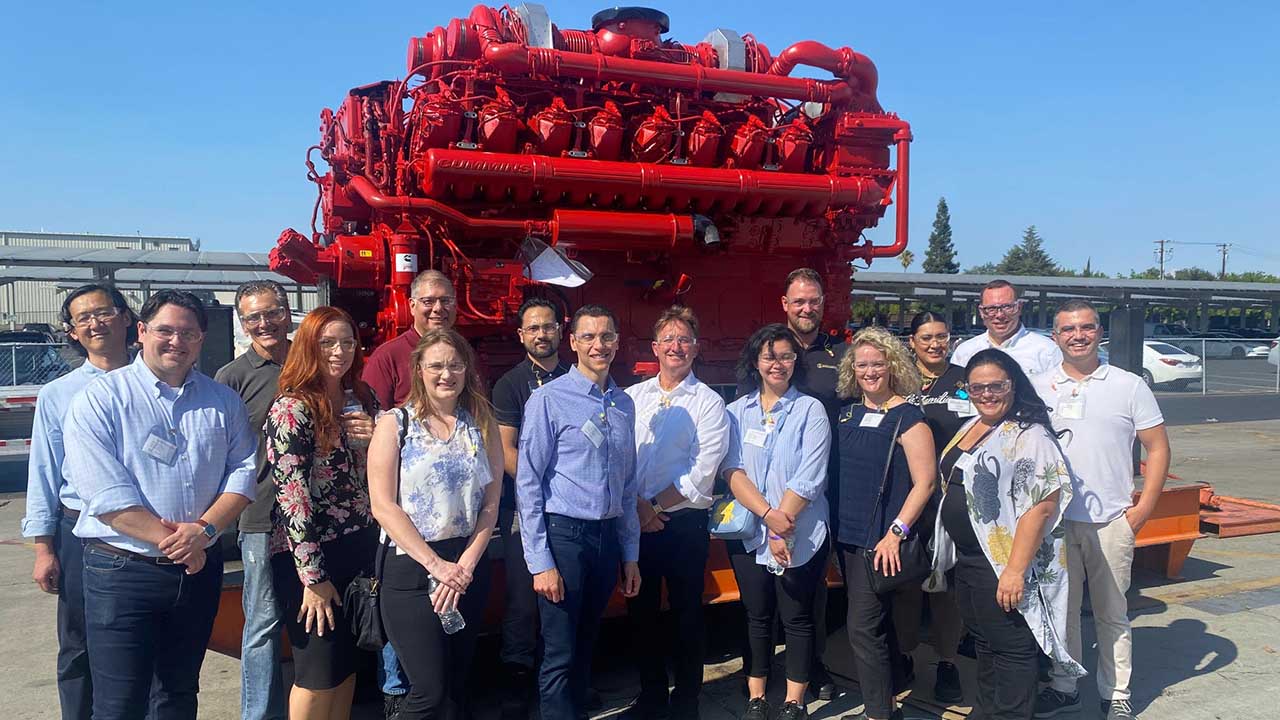
Participants of the Sacramento stop of the California Manufacturing Roadshow (Photo: CA FWD)
California manufacturing supports strong regional economies and is a source of good paying jobs. During a time of increased federal investment in manufacturing and other technology driven industries, the state’s regions face challenges and opportunities to expand California’s manufacturing sector sustainably and equitably. This August, manufacturing stakeholders in four regions gathered for the California Manufacturing Roadshow to discuss and trade ideas on how to strengthen their regional economies.
“It has been the backbone of, not only California’s economy, but the nation’s economy,” said Matt Bogoshian, American Manufacturing Communities Collaborative (AMCC) executive director. “It’s exciting to see that we have so much talent and innovation in California.”
A collaboration between CA FWD, AMCC, Valley Vision and the California Manufacturers and Technology Association, the Roadshow gathered educators, economic development professionals, local and state agency representatives and manufacturers in Sacramento, Fresno, San Francisco and Los Angeles. It is part of AMCC’s partnership with the U.S. Economic Development Administration in the national Manufacturing Community of Practice.
Although each region is unique, they face some of the same challenges in supporting the manufacturing sector. “The common theme is really that each region needs to strengthen their ecosystem of support around the manufacturing that they have and increase that manufacturing,” added Bogoshian. “Regions need to be improving all six parts of their ecosystem.” Those six parts include workforce, supply chain, infrastructure, site development, a research and innovation zone with education and access to capital.
At the Los Angeles Roadshow event, Los Angeles County Economic Development Corporation President and CEO and California Stewardship Network member Stephen Cheung issued a call to action to put policies and programs in place to ensure that the Los Angeles region, with its 300,000 manufacturing jobs, remains one of the country’s largest manufacturing centers.
“As we move forward, we really have to focus on the industry clusters that are going to be able to sustain the growth of those industries plus making sure those opportunities are available to small companies, especially the manufacturers that are here,” said Cheung, adding that 94% of the region’s manufacturers have 20 or fewer employees.
The regions can also access resources from California’s Community Economic Resilience Fund (CERF) program to strengthen that manufacturing ecosystem. “That’s an opportunity for this governor and for California to really prioritize manufacturing because it has the most positive ripple effect throughout the economy. It punches above its weight. Any other sector doesn’t perform as well as manufacturing for the communities around which it operates,” explained Bogoshian.
In Los Angeles, Cheung described a CERF project to reduce emissions and transition to a carbon neutral economy. The plan is to shift heavy duty trucks currently being used to transport goods from the Ports of Los Angeles and Long Beach from fossil fuels to hydrogen fuel and electric batteries. Other regions are also aiming to use funds available under CERF to strengthen their manufacturing sectors.
The conversation held at the regional Roadshow events will continue at the 2023 California Economic Summit, which will be held October 11-13 in Indian Wells and during which the findings from the Roadshow will be shared. The Summit’s Advanced Manufacturing Work Group is currently working on priorities listed in the 2023 Roadmap to Shared Prosperity, including:
-
- Formation of a statewide Manufacturing Council to advise state leaders and coordinate manufacturing related activities in order to maximize state and federal funding opportunities,
- Elevate the role of manufacturing in meeting the state’s decarbonization and economic development goals, and
- Identify specific needs in order to best position the state’s manufacturing sector for growth (e.g., regulatory reform, funding, education and public awareness, workforce development and DEI goals, data/research.
“The great news is that CA FWD has been an important partner to AMCC in terms of bringing California leaders together to send a message to the private sector, public sector and everyone to strengthen California’s manufacturing ecosystem,” said Bogoshian.
If you are a manufacturer, a stakeholder or want to be part of the conversation, you can attend the 2023 California Economic Summit. Get more info and get registered at the 2023 Summit Event Website.

